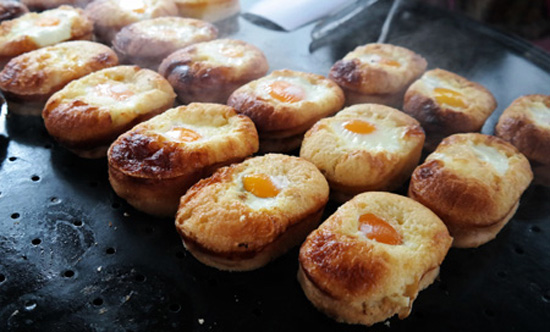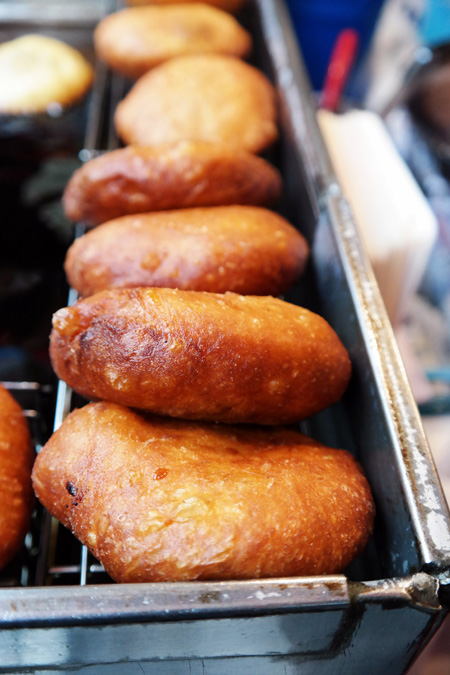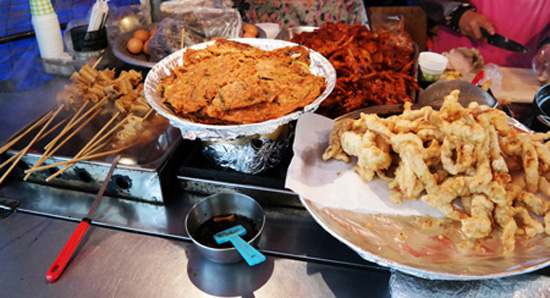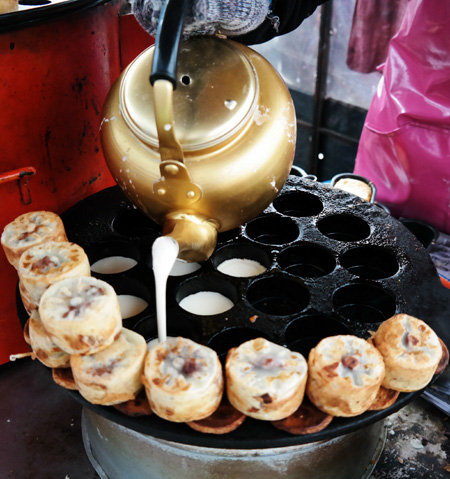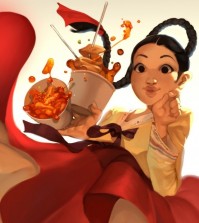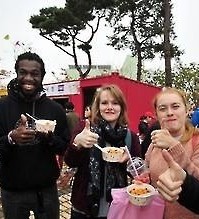- California Assembly OKs highest minimum wage in nation
- S. Korea unveils first graphic cigarette warnings
- US joins with South Korea, Japan in bid to deter North Korea
- LPGA golfer Chun In-gee finally back in action
- S. Korea won’t be top seed in final World Cup qualification round
- US men’s soccer misses 2nd straight Olympics
- US back on track in qualifying with 4-0 win over Guatemala
- High-intensity workout injuries spawn cottage industry
- CDC expands range of Zika mosquitoes into parts of Northeast
- Who knew? ‘The Walking Dead’ is helping families connect
Fresh from the street
Seoul’s street food scene is an international attraction
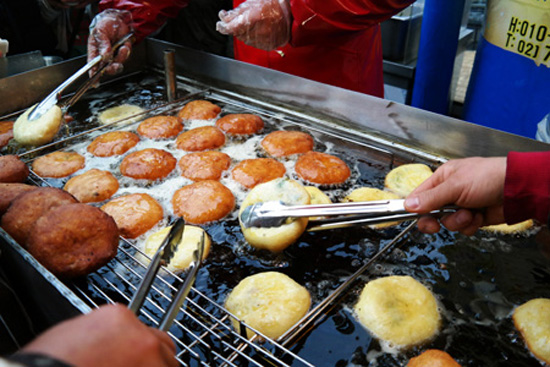
Vendors cook the deep-fried version of “hotteok,’’ or Korean pancakes, at the Namdaemun shopping district in downtown Seoul.
(Korea Times photo by Yuh Suh-young)
By Yun Suh-young
One of Seoul’s biggest attractions as a food destination is that its culinary offerings are not confined to restaurants. An amazing variety of food is available at the food carts and trucks that are a common sight along the streets of leisure and business districts, providing pleasure and refuge for the city’s famously overworked citizens.
It could be said that the city’s street-food culture was more vibrant from the 1960s to the early 1990s. But vendors now struggle to compete with franchised fast-food chains, the dull but relentless juggernauts that now dominate the inexpensive eating industry.
Still, it could be argued that the cheap food options continue to be better on the streets. While French toast, fish sticks, sweet pancakes and “tteokbokki” (rice cake with red chilli sauce) remain the most popular items among meals-on-wheels, street chefs are experimenting more than before to satisfy the generation of eaters who grew up with food blogs and Facebook.
The diversity and quality of Seoul’s street food have been noticed by foreign travelers as well. Tourism officials here say that the city’s areas known for their density of street food outlets, such as the office district near Seoul City Hall, have become must-stops among tourists. There are even companies like O’ngo Food Communications, which build travel products around street food attractions.
“Our tourists experience street food like tteokbokki, hotteok (fried sweet pancakes), odaeng (boiled, steamed or fried fish sticks) and sundae (Korean blood sausages). The items change from time to time. Bbopki (sugar candy) and patbingsu (ice flakes with sweet red bean syrup) are also popular,” said Jia Choi, president of O’ngo Food Communications, which operates a street food tour program.
“They love the experience. Western travelers seem to enjoy it particularly. Asian tourists find the street food culture similar to what they experience at home but seem to enjoy discovering the differences.”
There are a number of street food items that are more popular when the weather gets cold. They include “boongeopang” (fish-shaped pies with sweet red-bean filling), “gukhwapang” (flower-shaped red-bean buns), “gyeranpang” (buns garnished with a cooked egg), “hodugwaja” (walnut cakes) and “dakkochi” (marinated chicken on skewers). There are also carts that sell baked sweet potatoes, chestnuts, ginkgo nuts and steamed corn.
A street vendor in her 60s, who sells stir-fried squid on her cart in Namdaemun, said that she has seen a dramatic increase in foreign customers in the past few years.
“I think most of my customers are foreigners now. Most of them used to be from Japan, but now I see more tourists from China, Hong Kong and Taiwan,” she said, adding that she has been running her food cart for over 30 years.
Shopping districts in Namdaemun, Myeong-dong and Dongdaemun are always buzzing with foreigners and the food carts seem to be benefiting from it.
“Myeongdong has different kinds of street food such as tteokbokki, odaeng, and ‘kimbap’ (rice, vegetables and meat rolled in seaweed), but I think I find the tastiest vendors in Dongdaemun,” said Aya, a tourist from Japan.
Emily from Hong Kong said her favorite street food was boongeopang.
“I liked the fish-shaped bread but I also like other street food such as tteokbokki or odaeng. Hotteok is good too,” she said.
“In my country, street food is sold inside shops, but I like eating outside on the streets here.”
It seems that the influx of foreigners is allowing vendors to be bolder in giving their traditional food items a twist. A success story is the hotteok in Namdaemum, where vendors fill the pancakes with seafood, meat, vegetables and fried noodles instead of just the traditional sugar-cinnamon mixture.
Myeongdong is also becoming famous for its instantly squeezed fruit juice provided in disposable clear packs, which have been apparently tailored for tourists.








